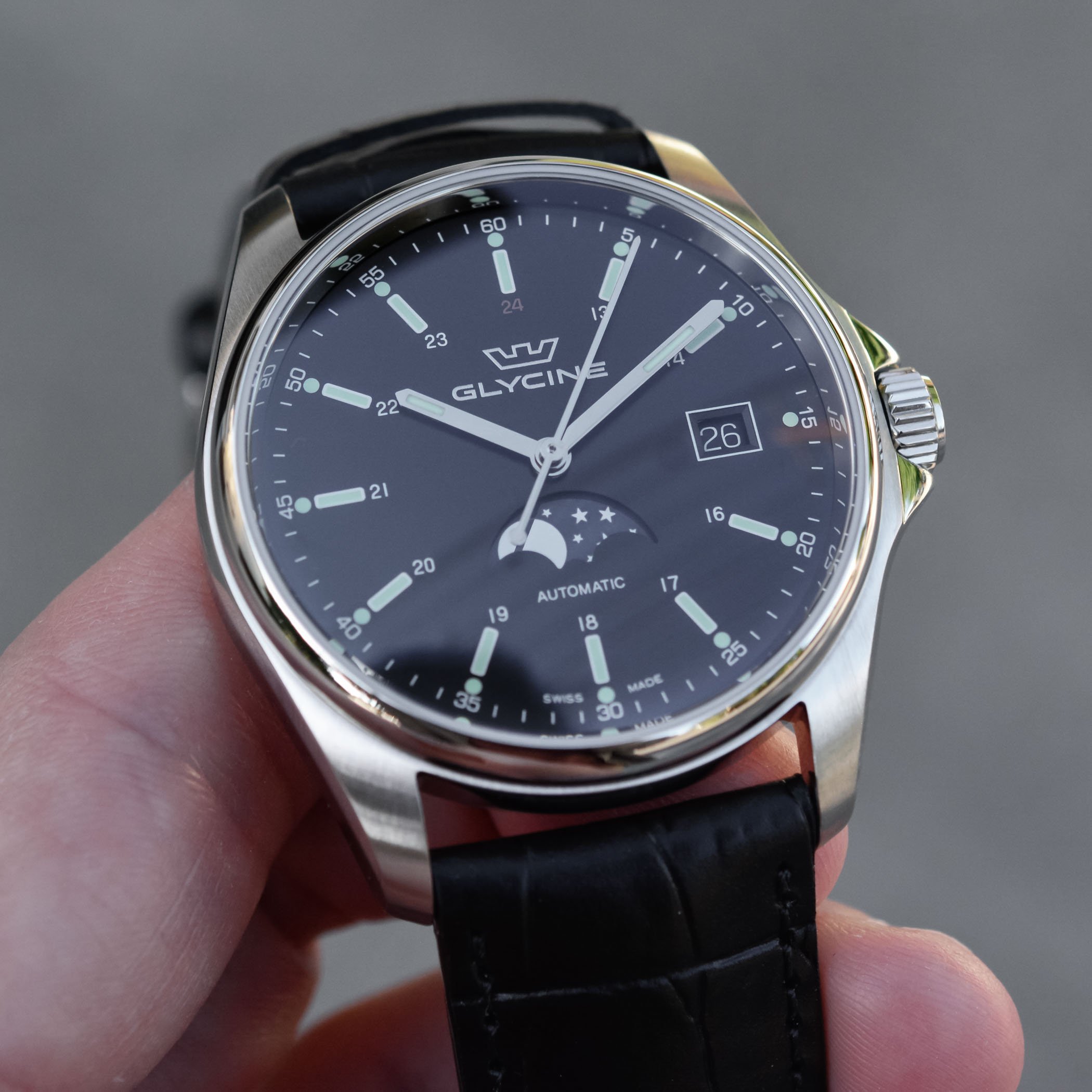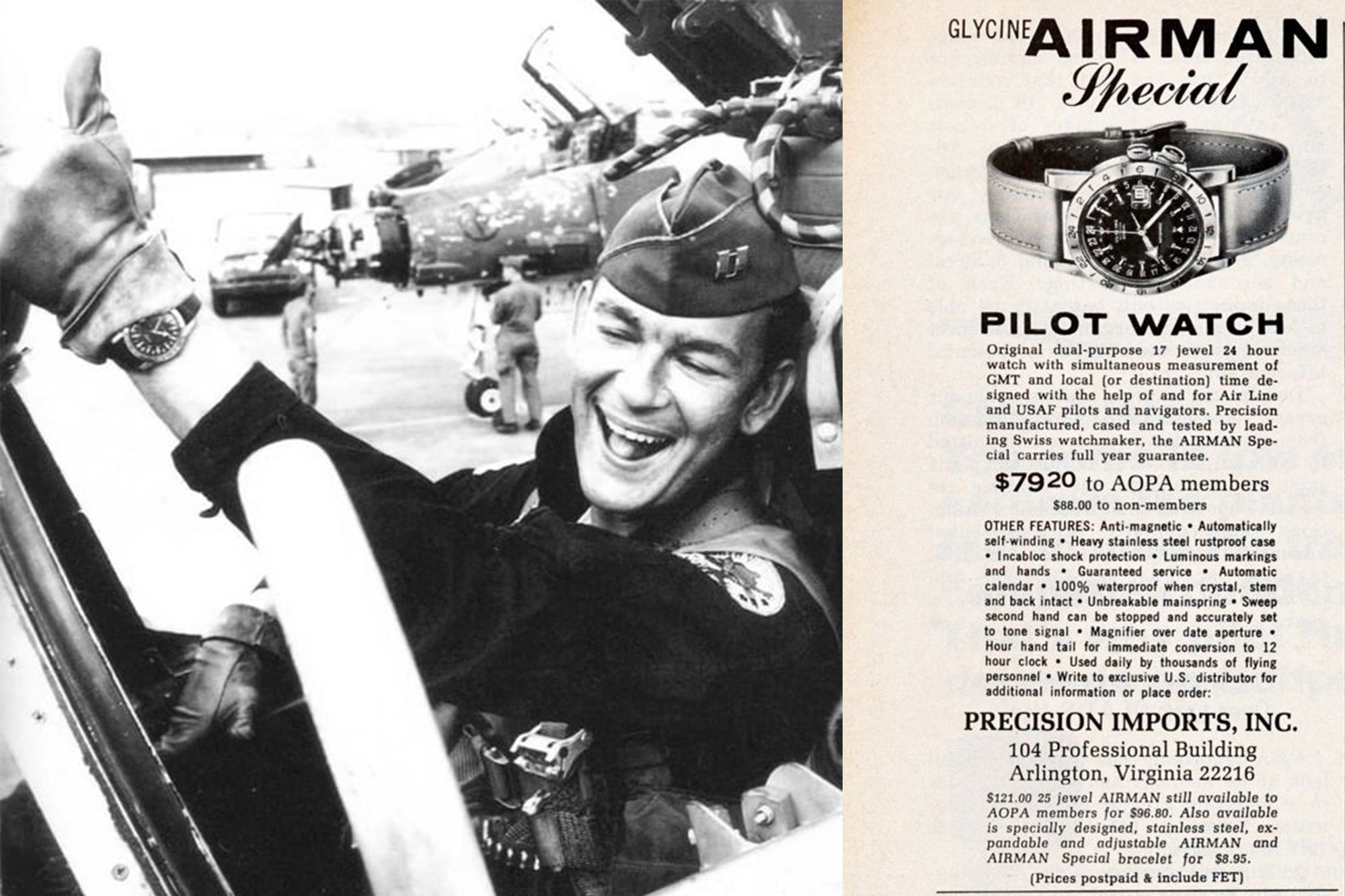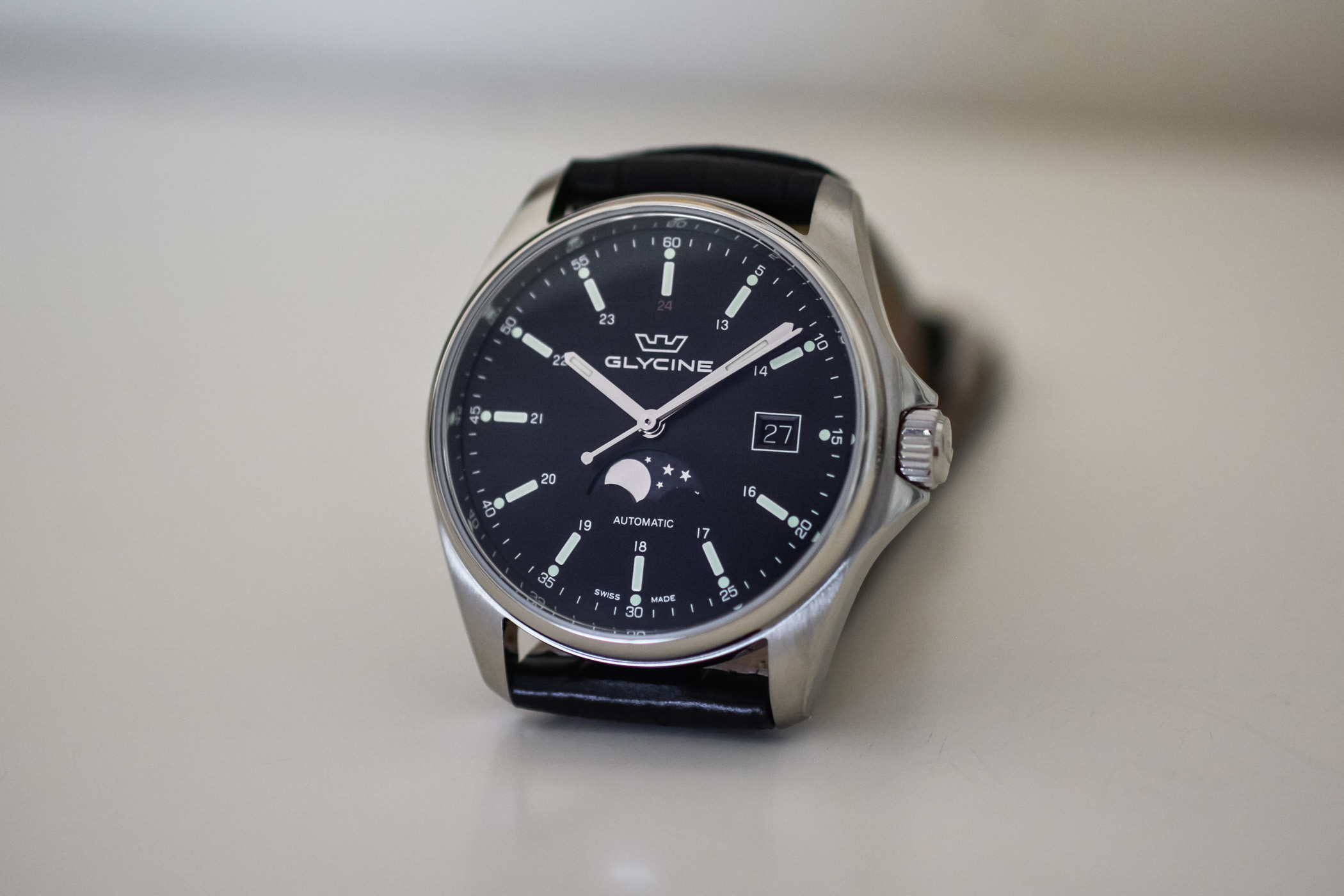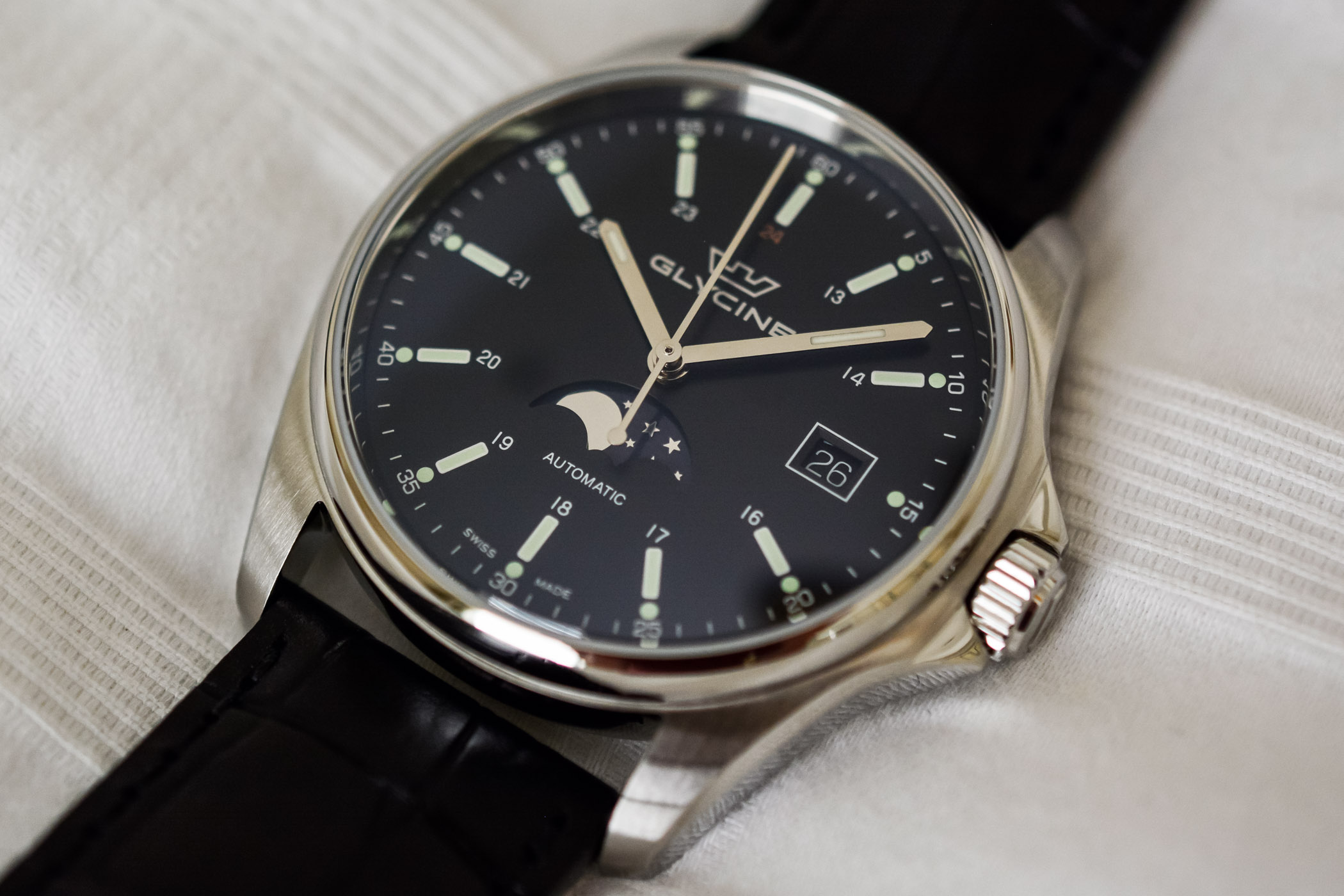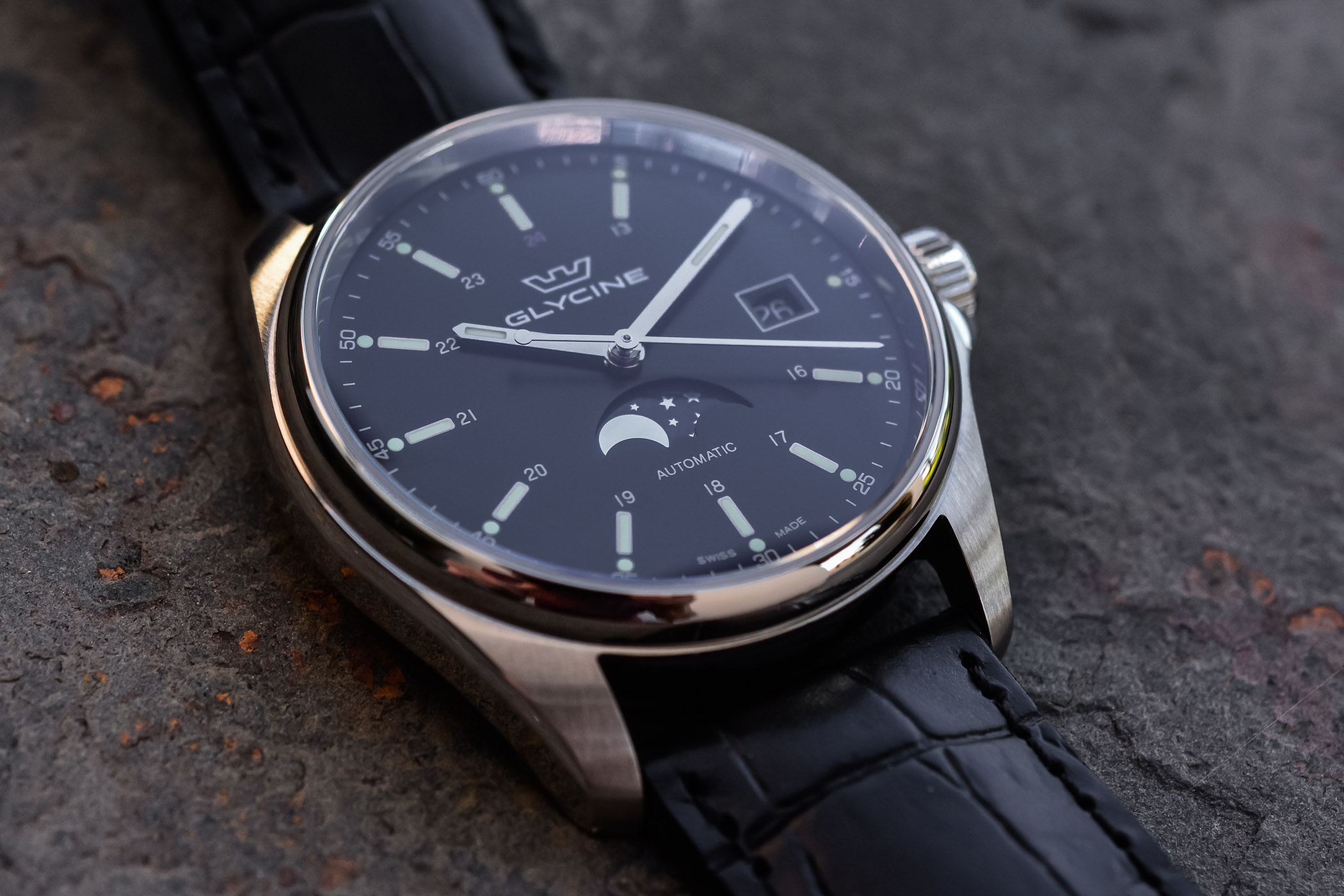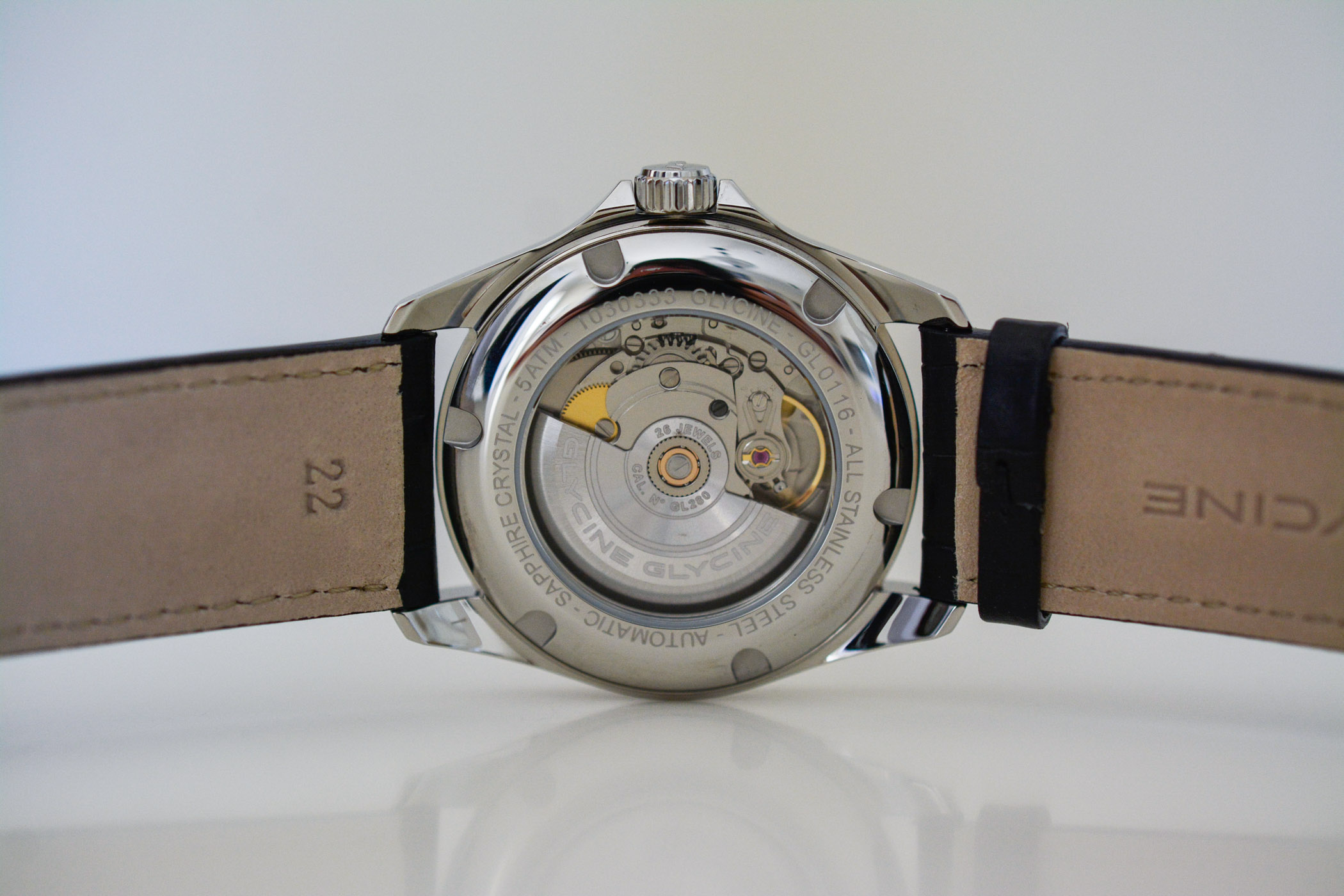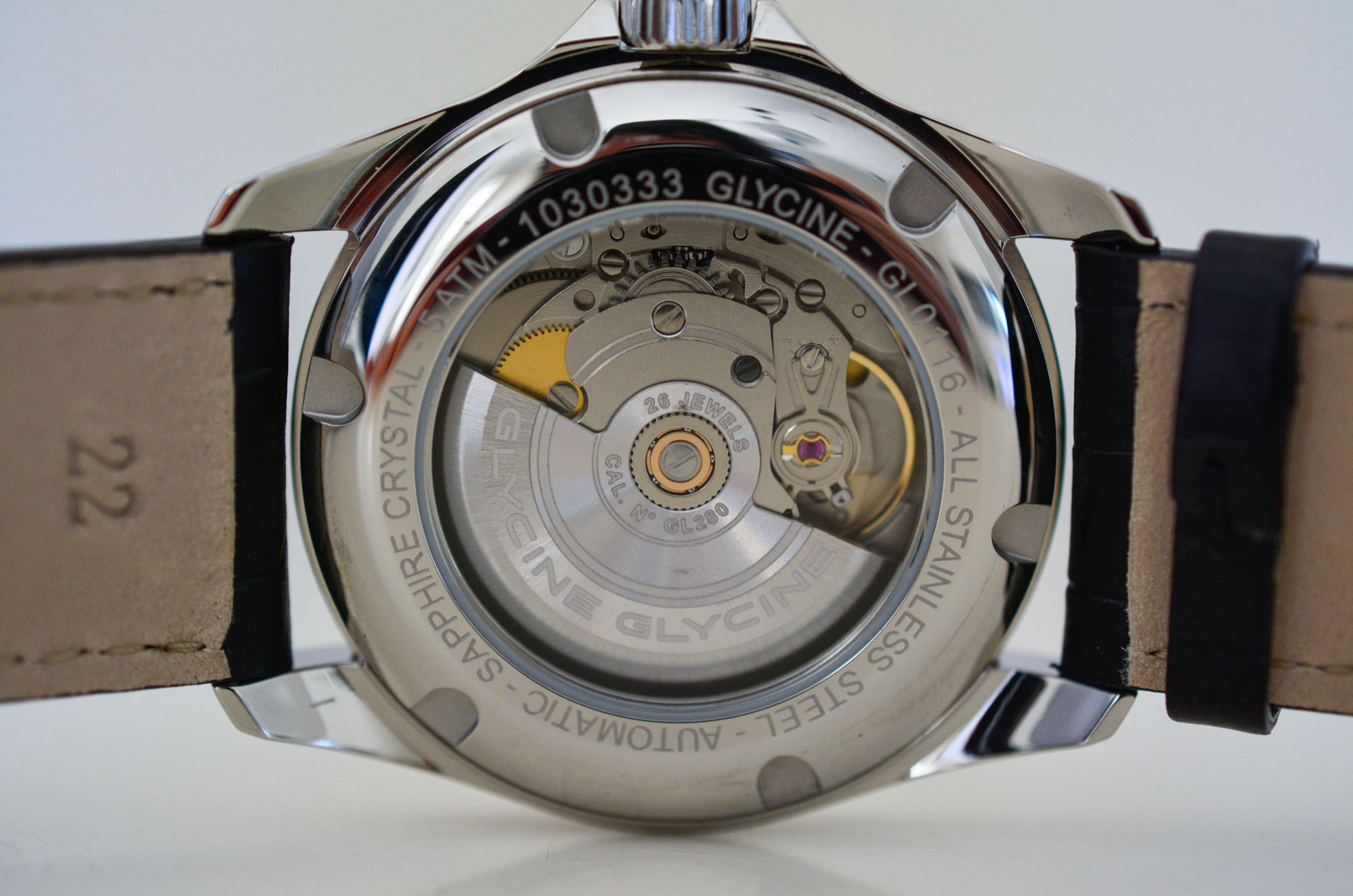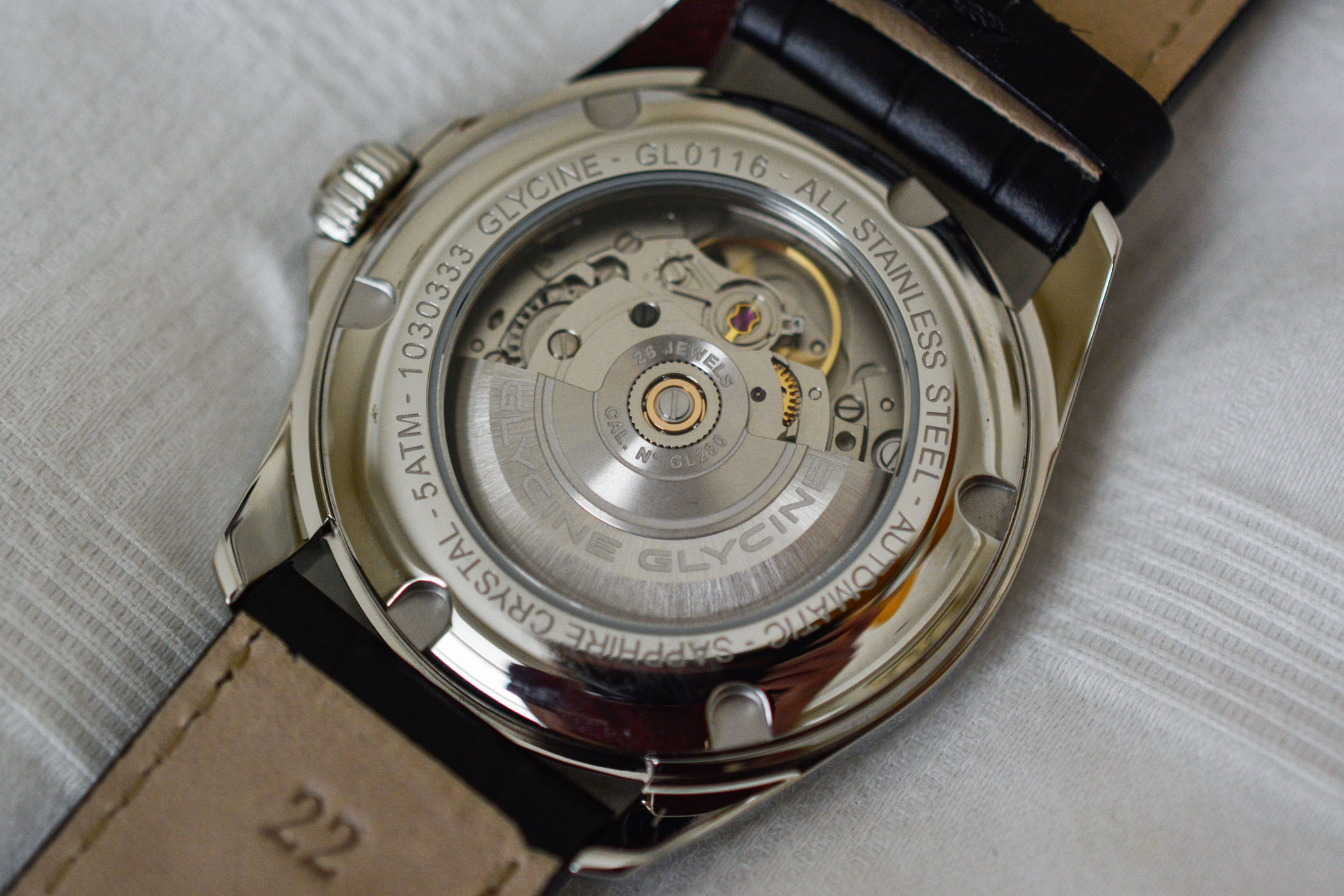Glycine Combat 6 Classic Moonphase
Style and function combine in an affordable field watch with a moon phase from a centuries-old Swiss brand.
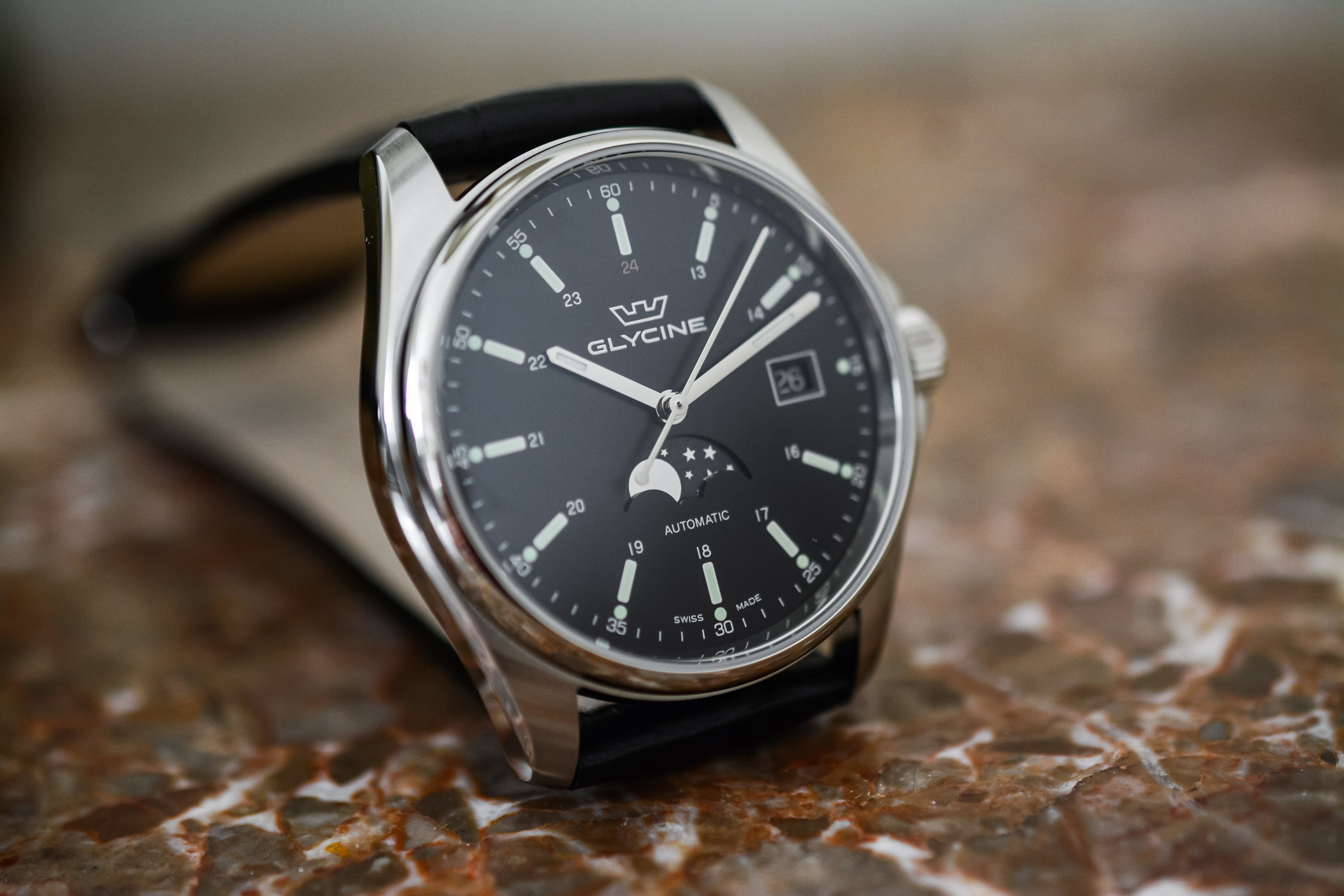
When talking about affordable field watches, brands like Hamilton and Seiko come to mind with reliable, no-nonsense mechanical pieces. Of course, you can spend more on luxury watches from the likes of Weiss or Longines, but a mature field watch from Glycine with an upscale complication can be had for a surprisingly accessible price. The Combat 6 Classic Moonphase offers the requisite field watch legibility and reliability but spruces things up with a moon phase for a high-end touch. And it’s from a proper Swiss brand that never left Biel/Bienne in over a hundred years of operations to boot.
BACKGROUND
Glycine was founded in 1914 by watchmaker Eugène Meylan in Biel/Bienne, Switzerland. Meylan had an initial focus on luxury with gold and platinum pocket watches, and precise, miniature movements for women’s wristwatches. The brand prioritized wealthy clientele and in the 1930s, Meylan invented his own automatic movement and also launched a range of certified chronometers. As World War II intensified, Swiss brands paid a heavy price as export markets were effectively cut off, but Glycine weathered the storm and was one of only 29 exhibitors at the 1938 Basel Fair, never missing the event since.
The brand’s most famous line launched in 1953, the AIRMAN, which was one of the first GMT pilot’s watches. It was so well received that it remains largely unchanged today and among Glycine’s longest-running models. Three decades after World War II wreaked havoc on the Swiss watch industry, the quartz crisis stormed in and around 60,000 jobs were ultimately lost. Glycine was dealt another serious blow, but again kept its head above water. In 1984, the brand was purchased by Hans Brechbühler, who introduced quartz watches to the portfolio and pursued expansion in countries like Scandinavia, Italy, Holland and Germany. Quartz movements continued to dominate in the 1990s, but the AIRMAN 2000 returned to its mechanical roots with an ETA 2893-2 automatic in 1998. The COMBAT, first launched in 1967, was reinvigorated with mechanical movements along with other lines like the OBSERVER, KMU and INCURSORE.
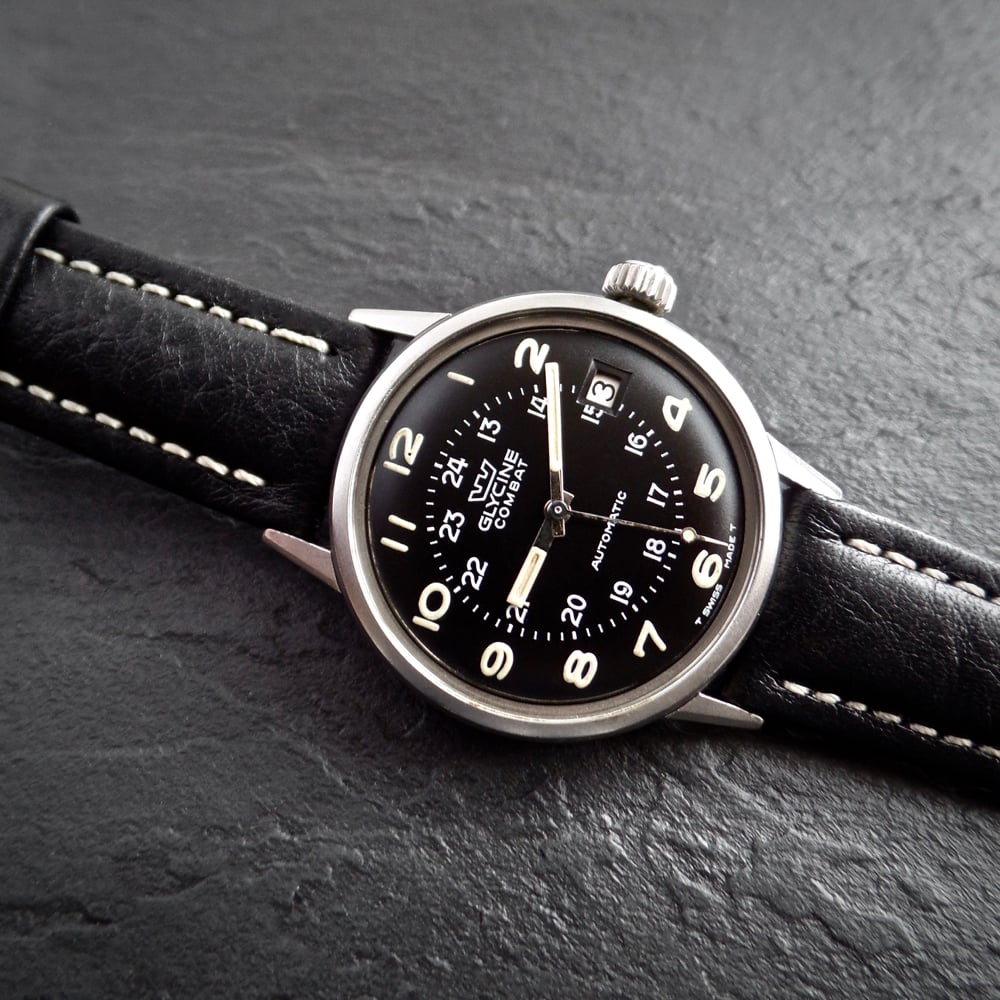
In 2016, Glycine was acquired by Invicta, a controversial move as the brand had a bit of a stigma for mass-producing cheap watches. Glycine remained independently run and its products were never negatively influenced, however, and Invicta simply focused on marketing and distribution development for the brand.
CASE AND DESIGN
The Combat 6 Classic Moonphase has a 316L stainless steel case with a 40mm diameter and height of 12.2mm. The case is mostly polished with vertical brushing on the top of the lugs, giving it a dressy vibe. A narrow, rounded bezel surrounds a domed sapphire crystal with multiple anti-reflective coatings. The signed crown is fully guarded by an extension of the case and doesn’t screw down, so water-resistance is limited to 50 metres. That’s fine for rain, splashes and a light swim, and perfectly adequate for a field watch. The caseback features a mineral glass exhibition window, which should remain scratch-free against your wrist, despite not being sapphire. The lugs have a nice curvature and at 22mm, are a bit wide for a 40mm piece. It adds to the wrist presence and the watch consequently wears larger than the diameter suggests.
DIAL AND HANDS
The matte black dial has a subtle sunray finish and also comes in white, blue or anthracite. The moon phase above 6 o’clock is the eye-catcher and features a polished gold moon and stars against a dark blue background. I find this really complements the case design for an upscale aesthetic, but the latest models introduced a more skeuomorphic grey moon and stars. These have a sportier, more casual field watch vibe and I don’t really prefer one variant over the other.
The polished baton-style hands have Super-LumiNova inserts near the tips and all indices are filled with Super-LumiNova as well. Just inside the indices are Arabic numerals for 24-hour time, fairly standard for such a piece. A date window sits at 3 o’clock with a white frame and white print on a black background, and it tastefully blends into the dial. White with black print would’ve stuck out a bit.
MOVEMENT
Powering the Glycine Combat 6 Classic Moonphase is the GL280 calibre, a slightly modified Sellita SW280 automatic. It has 26 jewels, beats at 28,800vph (4Hz) with a 38-hour power reserve. Functions include central hours, minutes, hacking seconds, date at 3 o’clock and moon phase at 6 o’clock. Seen through the exhibition caseback, it’s clean but undecorated, although the rotor has GLYCINE engraved twice at the end. The moon phase is accurate to approximately +8.81 hours per year if the mainspring is continuously wound.
STRAP
The black dial version comes with a 22mm black leather strap with a faux alligator pattern and steel pin buckle. It looks great with the watch, but is just too stiff out of the box. It should loosen up after a reasonable break-in period, but as a self-proclaimed strap snob, I replaced it almost immediately. The importance of a comfortable (or properly sized) strap seems to be a bit overlooked these days, but fortunately, there’s an endless supply of aftermarket straps to choose from. It is nice when a watch just comes ready to go. Your mileage may vary on this one.
FINAL THOUGHTS
The Glycine Combat 6 Classic Moonphase is an excellent field watch for those looking for a Swiss piece with an upscale vibe. The 40mm diameter is a perfect, contemporary size for most and the moon phase doesn’t throw off the dial’s balance. It might not have that no-nonsense military aesthetic like Hamilton’s new Khaki Field Titanium, but that’s also what makes it special. It can easily dress up or down and looks great with a suit and tie (I can’t quite say that for a Hamilton Khaki). I wish the strap wasn’t like a thick piece of cardboard, although it does look great, but I keep a healthy variety of straps on-hand anyway, so I can only complain so much. This piece is more versatile than many in its price range and is a slick, under-the-radar Swiss watch going back to the 1960s.
Let’s talk about the price – it retails for CHF 1,200, which certainly isn’t cheap and more than double what you can get from brands like Hamilton or Seiko, although not off the mark for having a more advanced complication. However, this is one of those pieces that you don’t have to pay retail for. It’s easy to find online for under CHF 400, which is a steal for such a well put together Swiss automatic with a moon phase. Why the price discrepancy? I suspect it has something to do with Invicta’s acquisition, but I’m certainly not complaining. And at that price, I couldn’t recommend this watch more. For more information, visit Glycine’s website.

